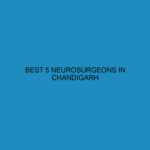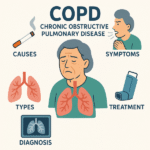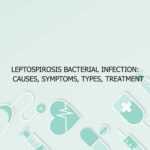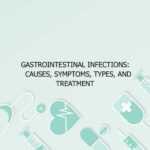Now Reading: Stroke: Signs, Symptoms, Types, Diagnosis & Treatment
- 01
Stroke: Signs, Symptoms, Types, Diagnosis & Treatment
Stroke: Signs, Symptoms, Types, Diagnosis & Treatment
Stroke is one of the leading causes of death and long-term disability worldwide. It is a medical emergency that occurs when the blood supply to part of the brain is interrupted or reduced, preventing brain tissue from getting oxygen and nutrients. Within minutes, brain cells begin to die. Prompt treatment is crucial and can minimize brain damage and potential complications. This comprehensive guide discusses stroke in detail, including its signs, symptoms, types, diagnostic methods, treatment strategies, and answers to frequently asked questions.
Signs and Symptoms of Stroke
The symptoms of a stroke often appear suddenly and vary depending on the area of the brain affected. Common signs include sudden numbness or weakness, especially on one side of the body; confusion; difficulty speaking or understanding speech; visual disturbances in one or both eyes; trouble walking; dizziness; loss of balance or coordination; and severe headache with no known cause.
The acronym FAST is commonly used to help recognize stroke symptoms:
- Face drooping
- Arm weakness
- Speech difficulty
- Time to call emergency services
Timely recognition of these signs can be the difference between life and death or severe disability.
Types of Stroke
Strokes are primarily categorized into three types:
- Ischemic Stroke: The most common type, caused by a blockage in a blood vessel supplying the brain. This blockage may result from a blood clot or atherosclerosis.
- Hemorrhagic Stroke: Occurs when a weakened blood vessel ruptures, leading to bleeding in the brain. Causes include high blood pressure, aneurysms, arteriovenous malformations, or head injury.
- Transient Ischemic Attack (TIA): Also known as a mini-stroke, a TIA is a temporary blockage that resolves on its own. While symptoms are temporary, a TIA is a warning sign of a possible future stroke.
Diagnosis of Stroke
Diagnosing a stroke involves a combination of physical examination, medical history, and advanced imaging techniques. The following methods are commonly used:
- CT Scan (Computed Tomography): Quickly identifies bleeding or ischemia in the brain.
- MRI (Magnetic Resonance Imaging): Provides a more detailed view and can detect smaller lesions not seen on a CT scan.
- CT Angiography or MR Angiography: Used to visualize blood vessels in the brain.
- Carotid Ultrasound: Detects narrowing or blockage in the carotid arteries.
- Blood Tests: Rule out infections, check clotting function, and evaluate risk factors like blood sugar and cholesterol.
- Electrocardiogram (ECG) and Echocardiogram: Identify heart-related causes such as atrial fibrillation or heart clots.
Treatment of Stroke
The treatment of stroke depends on the type, severity, and the time since onset. Timely treatment is essential to limit damage to brain tissue.
Ischemic Stroke Treatment
- Thrombolytic Therapy: Administration of tissue plasminogen activator (tPA) within 4.5 hours of symptom onset can dissolve the clot.
- Mechanical Thrombectomy: A catheter-based procedure to remove a large clot within 6 to 24 hours of onset.
- Antiplatelet and Anticoagulant Drugs: Aspirin, clopidogrel, and anticoagulants like warfarin or DOACs to prevent further clots.
Hemorrhagic Stroke Treatment
- Blood Pressure Management: Critical to prevent further bleeding.
- Surgical Intervention: Evacuation of hematoma, clipping or coiling of aneurysms.
- Intracranial Pressure Control: With medications like mannitol or surgical decompression.
Post-Stroke Rehabilitation
Recovery often requires physical therapy, occupational therapy, speech therapy, and psychological support. Long-term management includes risk factor control (hypertension, diabetes, cholesterol), lifestyle changes, and medication adherence.
Table: Overview of Stroke
| Category | Description |
|---|---|
| Common Symptoms | Sudden weakness, speech difficulty, confusion, visual loss, dizziness, headache |
| Types | Ischemic, Hemorrhagic, Transient Ischemic Attack (TIA) |
| Diagnostic Tools | CT scan, MRI, Angiography, Carotid Doppler, ECG, Blood tests |
| Emergency Treatment | tPA, Mechanical thrombectomy, BP control, surgery |
| Long-Term Treatment | Rehabilitation, Antiplatelets, Risk factor control |
10 Frequently Asked Questions
What causes a stroke and how can it be prevented?
A stroke is usually caused by either a blocked artery (ischemic stroke) or the leaking or bursting of a blood vessel (hemorrhagic stroke). Lifestyle factors and medical conditions play a significant role in increasing stroke risk. Hypertension is the most critical risk factor, followed by diabetes, high cholesterol, smoking, obesity, and sedentary lifestyle. Atrial fibrillation and other cardiac arrhythmias can also lead to stroke due to clot formation. Preventive strategies include regular blood pressure monitoring, controlling blood sugar and cholesterol levels, quitting smoking, reducing alcohol intake, regular physical activity, and eating a balanced diet rich in fruits, vegetables, and whole grains. Regular medical checkups and appropriate medication adherence significantly reduce stroke risk.
What is the difference between a stroke and a transient ischemic attack (TIA)?
A transient ischemic attack (TIA) is often called a “mini-stroke.” It occurs when there is a temporary disruption in the blood supply to the brain, leading to stroke-like symptoms that resolve within 24 hours, usually in less than an hour. Unlike a stroke, a TIA doesn’t cause permanent brain damage, but it is a warning sign of a potential future full-blown stroke. Up to 1 in 3 people who have a TIA will eventually have a stroke, and half of these occur within a year. Thus, a TIA should never be ignored. Immediate medical evaluation and preventive interventions, such as antiplatelet therapy and addressing modifiable risk factors, are critical.
How is a stroke diagnosed in an emergency setting?
Diagnosis of stroke in an emergency setting starts with rapid clinical assessment using tools like the FAST scale. Paramedics or emergency physicians assess symptoms, patient history, and time of onset. Imaging plays a pivotal role—typically, a non-contrast CT scan is performed immediately to differentiate between ischemic and hemorrhagic stroke. If the CT scan is negative for hemorrhage and ischemic stroke is suspected within a treatment window, intravenous tPA may be considered. MRI and vascular imaging (like CT angiography) follow to evaluate the extent and location of the blockage. Additional tests include blood glucose levels, coagulation profile, ECG, and echocardiography. Speed is essential—door-to-needle time for tPA should ideally be less than 60 minutes.
Can a stroke be treated at home or with home remedies?
Stroke is a medical emergency and cannot be treated at home. Attempting to manage symptoms with home remedies can delay lifesaving care. Time lost is brain lost; for every minute without oxygen, millions of neurons may die. While a healthy lifestyle and some home measures like diet control can prevent stroke, actual treatment—especially in the acute phase—requires hospital-based interventions such as thrombolysis, mechanical clot retrieval, or surgery. Post-stroke rehabilitation and long-term care may involve home-based therapies, but initial treatment should always be conducted in a medical facility.
What are the long-term effects of a stroke?
The long-term effects of stroke vary depending on the location and extent of brain injury. Common residual effects include muscle weakness or paralysis, speech and language problems, cognitive impairments, emotional disturbances such as depression or anxiety, and difficulties with daily activities. Some individuals recover completely, while others have lasting disabilities. Rehabilitation, including physiotherapy, occupational therapy, and speech therapy, plays a vital role in regaining function. Emotional support and counseling are often required to cope with lifestyle changes. Stroke survivors also need to manage risk factors to prevent recurrence, including medications and lifestyle adjustments.
How does rehabilitation help after a stroke?
Rehabilitation is critical to recovery after a stroke and aims to help the patient regain as much function as possible. It typically starts in the hospital and may continue in rehabilitation centers, outpatient clinics, or at home. Physical therapy helps improve mobility and muscle strength. Occupational therapy focuses on regaining skills necessary for daily activities. Speech-language therapy aids in communication and swallowing difficulties. Rehabilitation also includes psychological support and counseling to manage emotional effects. The duration and intensity of rehab vary by individual and the severity of the stroke, but early and consistent rehabilitation improves the chances of recovery.
Are there any warning signs before a stroke occurs?
Yes, there can be warning signs before a stroke, particularly in the case of TIAs. These may include sudden weakness or numbness on one side, speech disturbances, blurred vision, confusion, or loss of balance. These symptoms might last only a few minutes and disappear, leading individuals to ignore them. However, they are critical warning signs and should prompt immediate medical attention. Other red flags include persistent headaches, especially with neurological signs, sudden memory lapses, or dizziness. Recognizing these signs and seeking prompt evaluation can prevent a major stroke.
Can younger individuals also suffer from strokes?
Yes, while stroke is more common in older adults, younger individuals can also suffer from it. Stroke in young adults can be due to congenital heart defects, clotting disorders, autoimmune diseases, migraines with aura, drug abuse, and lifestyle factors such as smoking and obesity. Pregnancy and postpartum period also pose risks due to changes in blood clotting. Increasing awareness and rising rates of hypertension and diabetes among the young population have led to more cases of early-onset strokes. Early diagnosis and addressing risk factors are crucial for prevention.
What lifestyle changes are recommended after surviving a stroke?
Post-stroke lifestyle changes are essential to prevent recurrence and improve quality of life. These include adopting a healthy diet low in saturated fat and sodium, increasing physical activity, quitting smoking, and limiting alcohol intake. Regular monitoring and control of blood pressure, diabetes, and cholesterol are vital. Adhering to prescribed medications like antiplatelets or anticoagulants is also important. Stress management through yoga, mindfulness, and psychological counseling helps in overall well-being. Engaging in support groups and staying socially active aids in emotional recovery. A multidisciplinary approach ensures long-term stroke prevention.
Is stroke hereditary or linked to family history?
Yes, genetics can play a role in stroke risk. A family history of stroke increases the likelihood of experiencing one, especially if it occurred at a young age. Hereditary conditions such as sickle cell disease, familial hypercholesterolemia, and some clotting disorders elevate stroke risk. However, environmental and lifestyle factors have a larger impact. Even with a genetic predisposition, stroke risk can be significantly reduced by managing modifiable risk factors such as hypertension, diabetes, and smoking. Genetic counseling may be considered for individuals with a strong family history or rare inherited conditions.
Titles of 10 Medical Journals and Authors
- “Stroke: Pathophysiology, Diagnosis, and Treatment” – Adams HP Jr., Victor M. Lin
- “Acute Ischemic Stroke: Advances in Reperfusion Therapy” – Saver JL, Goyal M
- “Hemorrhagic Stroke: Clinical Insights and Innovations” – Broderick JP, Connolly ES
- “Neuroimaging in Stroke: Past, Present, and Future” – Kidwell CS, Wintermark M
- “Post-Stroke Rehabilitation: Challenges and Advances” – Langhorne P, Bernhardt J
- “TIA as a Predictor of Stroke: An Evidence-Based Review” – Easton JD, Johnston SC
- “Thrombectomy in Acute Stroke: A New Standard of Care” – Nogueira RG, Jahan R
- “Risk Factors and Stroke Prevention in Young Adults” – Singhal AB, Biller J
- “Intracerebral Hemorrhage: Current Concepts and Treatment” – Mayer SA, Rincon F
- “Stroke Epidemiology and Global Burden” – Feigin VL, Norrving B









